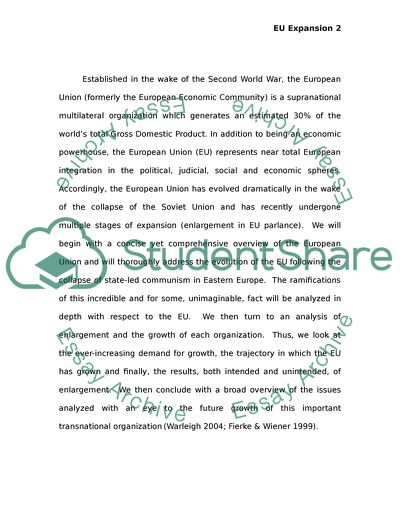Cite this document
(“The European Union Expansion Research Paper Example | Topics and Well Written Essays - 2000 words”, n.d.)
The European Union Expansion Research Paper Example | Topics and Well Written Essays - 2000 words. Retrieved from https://studentshare.org/politics/1725530-social-political-economic-or-cultural-issue-relating-to-the-european-region
The European Union Expansion Research Paper Example | Topics and Well Written Essays - 2000 words. Retrieved from https://studentshare.org/politics/1725530-social-political-economic-or-cultural-issue-relating-to-the-european-region
(The European Union Expansion Research Paper Example | Topics and Well Written Essays - 2000 Words)
The European Union Expansion Research Paper Example | Topics and Well Written Essays - 2000 Words. https://studentshare.org/politics/1725530-social-political-economic-or-cultural-issue-relating-to-the-european-region.
The European Union Expansion Research Paper Example | Topics and Well Written Essays - 2000 Words. https://studentshare.org/politics/1725530-social-political-economic-or-cultural-issue-relating-to-the-european-region.
“The European Union Expansion Research Paper Example | Topics and Well Written Essays - 2000 Words”, n.d. https://studentshare.org/politics/1725530-social-political-economic-or-cultural-issue-relating-to-the-european-region.


